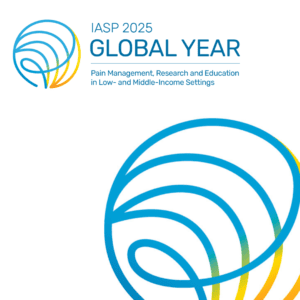- Membership
- Publications
- Resources
- Education
- Events
- Outreach
- Global Year
- Pain Management, Research and Education in Low- and Middle-Income Settings
- Sex and Gender Disparities in Pain
- Integrative Pain Care
- Translating Pain Knowledge to Practice
- Back Pain
- Prevention of Pain
- Pain in the Most Vulnerable
- Pain Education
- Joint Pain
- Pain After Surgery
- Global Year Campaign Archives
- My Letter to Pain
- IASP Statements
- ICD-11 Pain Classification
- Global Alliance of Partners for Pain Advocacy (GAPPA)
- National, Regional, and Global Pain Initiatives
- International Pain Summit
- Pain Awareness Month
- Global Year
- Careers
- About
- For Pain Patients and Professionals
Skip to content
Papers of the Week
Tac1-expressing neurons in the central amygdala predominantly mediate histamine-induced itch by receiving inputs from parabrachial Tac1-expressing neurons.
Authors
Zhang Y, Shi S, Mao E, Chen Y, Chen J, Tian M, Huang F, Cai Z, Li Y, Kou ZAbstract
Itch is a distinct and bothersome sensation closely associated with a strong urge to scratch. Both the parabrachial nucleus (PBN) and the central amygdala (CeA) are responsive to itch stimuli and contain neurons that express tachykinin 1 (Tac1), which are known for their significant involvement in itch-induced scratching at both spinal and supraspinal levels. Significantly, the PBN neurons project their axons to form close connections with the CeA neurons. However, the role of the PBN-CeA pathway in modulating itch remains to be determined. We utilized immunohistochemistry, fiber photometry, chemogenetic, and behavioral techniques to investigate the role of the PBN-CeA pathway in itch. Our results indicate that neurons in the CeA can be more activated by acute itch than chronic itch. Notably, in response to acute itch stimuli, both CeA and PBN neurons were specifically activated by histamine (His)-induced itch. Furthermore, the Tac1-positive terminals from the PBN neurons formed close connections with CeA neurons. We also demonstrated that activating the PBN-CeA pathway using a chemogenetic approach could increase scratching behaviors in His-induced itch, other than chloroquine (CQ)-induced itch. Conversely, inhibiting the PBN-CeA pathway decreased scratching behaviors in mice with His-induced itch. Taken together, these results suggest that the PBN-CeA pathway may play a specific role in modulating His-induced acute itch.

